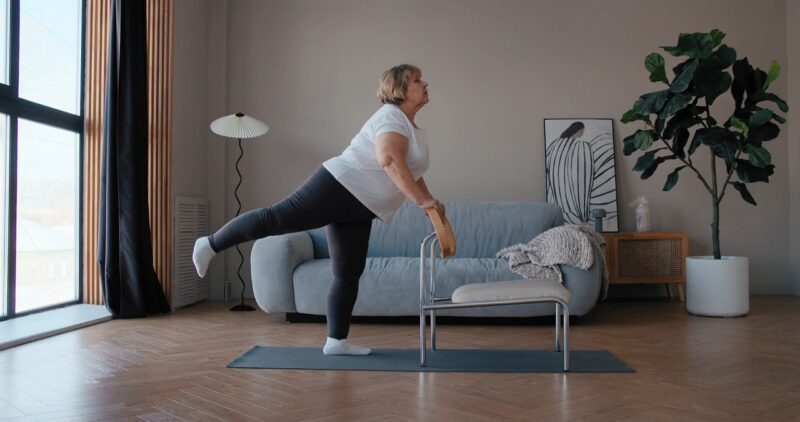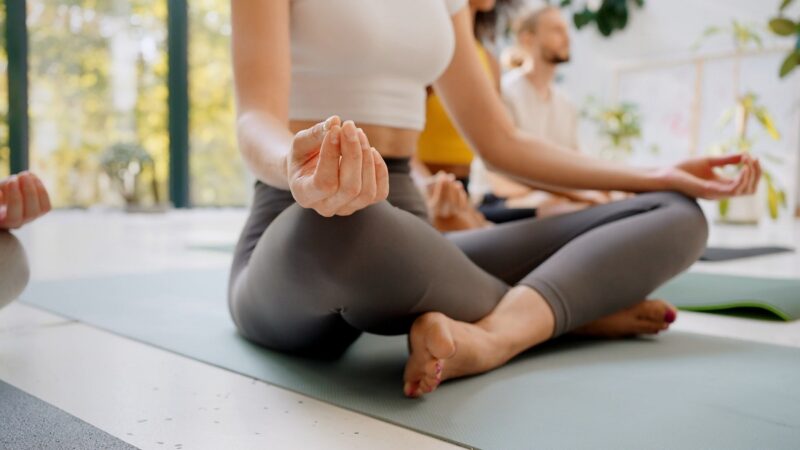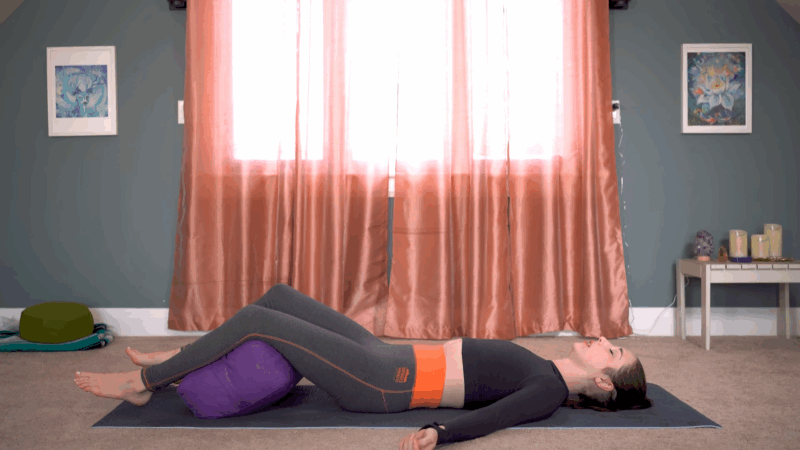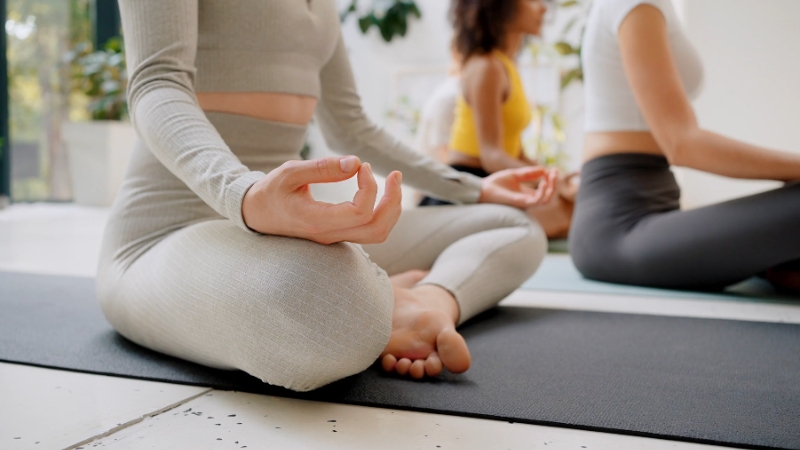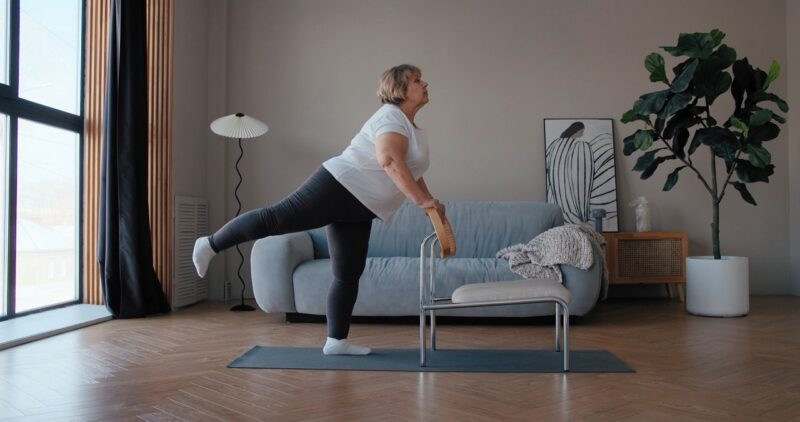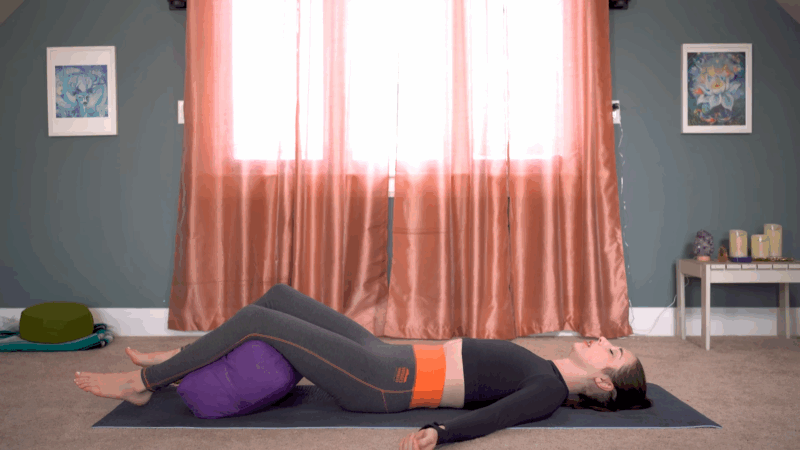
Share Post:
In recent months, I have watched students enter class with heavy shoulders, tired eyes, and hearts weighed down by stress. Burnout has become an invisible epidemic, affecting almost everyone I teach.
Rest alone often feels out of reach when exhaustion runs deep. Yoga Nidra offers a gentle yet powerful way to restore energy and soothe your nervous system when sleep and short breaks no longer work.
This practice, often referred to as yogic sleep, guides you into deep states of relaxation that rejuvenate the body and calm the mind.
I see it every day: students who feel disconnected from themselves start returning to a place of balance after just a few sessions. Yoga Nidra helps you rebuild energy from the inside out.
Let us explore how this guided practice can support your journey back to calm and wholeness.
What Is Yoga Nidra?
Yoga Nidra guides you into a state between waking and sleeping where your body can fully rest while your mind remains gently aware. You lie down, close your eyes, and follow a voice guiding you through breath, body scans, and visualisations. The practice soothes your nervous system, calms thoughts, and brings deep healing to your cells.
During Yoga Nidra, your brain waves shift from active beta to calm alpha and dreamy theta states. This is where your body’s natural repair processes happen.
Unlike sleep, where you drift unconscious, Yoga Nidra allows your awareness to observe these states of deep rest.
Brain State
Frequency
What Happens
Why It Matters
Beta
14-30 Hz
Alert, thinking
Stress, overactivity
Alpha
8-13 Hz
Relaxed focus
Calm and creativity
Theta
4-7 Hz
Deep meditation
Emotional healing
Delta
0.5-3 Hz
Deep sleep
Physical restoration
Why Yoga Nidra Helps with Burnout
Burnout is not just tiredness; it is a total depletion of your energy, creativity, and motivation. Yoga Nidra goes beyond simple rest by changing how your nervous system responds to stress.
As your body rests deeply, cortisol levels drop, and feel-good hormones like serotonin rise. Over time, your mind learns it does not need to stay in constant alert mode.
Studies show Yoga Nidra can improve sleep quality, reduce anxiety, and even help with pain management. In my classes, students tell me they wake up feeling lighter, with clearer thoughts and softer moods, even after just 30 minutes on their mats.
How to Practise Yoga Nidra
Find a quiet space where you can lie down comfortably without interruptions. Use a yoga mat, blanket, or your bed. Support your head with a pillow, place a bolster under your knees if needed, and cover yourself with a light blanket to stay warm.
Close your eyes and let your breath settle. Begin with a gentle body scan, noticing where tension sits without trying to fix it. Allow the guided voice to take you through visualisations, breath awareness, and moments of stillness.
When you finish, remain still for a few moments. Wiggle your fingers and toes, roll to one side, and come up slowly. Allow the effects of your practice to settle before returning to your day.
Supporting Yoga Nidra with Gentle Poses
Before you settle into Yoga Nidra, preparing your body with a few gentle yoga poses can deepen relaxation and release lingering tension. I often guide students through a brief sequence to relax muscles, calm the nervous system, and help the body transition into stillness.
Begin with Supta Baddha Konasana (Reclined Bound Angle Pose) by lying on your back, bringing the soles of your feet together, and allowing your knees to fall open. This opens the hips and grounds your energy.
Follow with Apanasana (Knees to Chest Pose) to release the lower back and bring awareness inward. Rock gently side to side if that feels comforting.
If you have time, move into Viparita Karani (Legs Up the Wall Pose) for a few minutes. This pose supports circulation, calms the mind, and signals to your body that it is safe to rest.
Finish with a few deep breaths in Savasana (Corpse Pose) before beginning your Yoga Nidra practice.
These simple poses prepare your body to remain still during Yoga Nidra, allowing your awareness to travel inward without physical distractions. Always move with care, listening to your body’s needs in each moment.
Creating Your Space
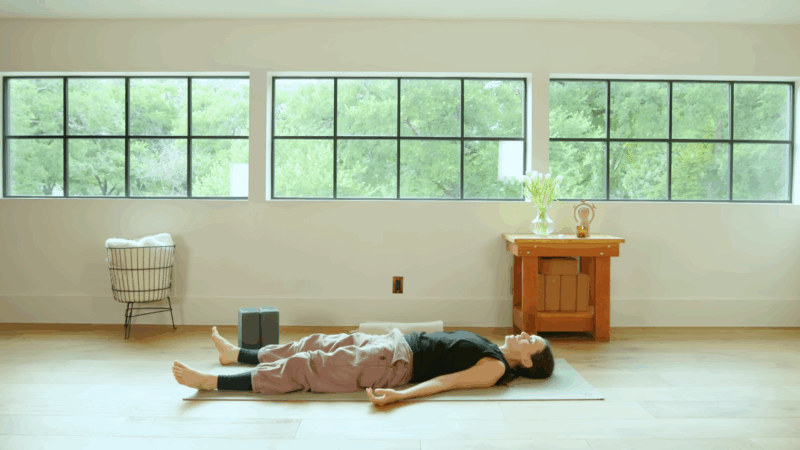
The environment in which you practice shapes your experience. Dim the lights, turn off your phone, and let the space feel calm.
Some students prefer silence, while others enjoy soft music or the sounds of nature. Experiment to find what grounds you best.
Keep a folded towel or pillow for your head and a blanket nearby. As your body relaxes deeply, it can feel cooler, and warmth helps maintain comfort.
Use the same space regularly if you can, as your nervous system will begin to associate it with relaxation and safety.
Benefits You May Notice
Yoga Nidra offers different gifts to each person. Some feel immediate calm, while others notice changes build over weeks of regular practice.
Area of Life
Possible Benefits
Timeframe
Sleep
Easier falling asleep, deeper rest
1-2 weeks
Stress
Feeling calmer, fewer physical tension patterns
2-4 weeks
Mood
More balanced emotions, reduced anxiety
3-6 weeks
Physical health
Lower blood pressure, reduced pain
4-8 weeks
Focus
Sharper concentration, clearer thinking
6-12 weeks
Integrating Yoga Nidra into Daily Life
Start small. Ten minutes each day will create more change than an hour once a week.
Practice in the morning to begin your day grounded, or before bed to help your mind release the day’s worries. Some students use short breathing-based practices at their desks during work breaks to reset energy.
Link your practice to existing habits, like morning tea or evening reading time. This makes it easier to stay consistent, even on busy days.
A Student’s Experience
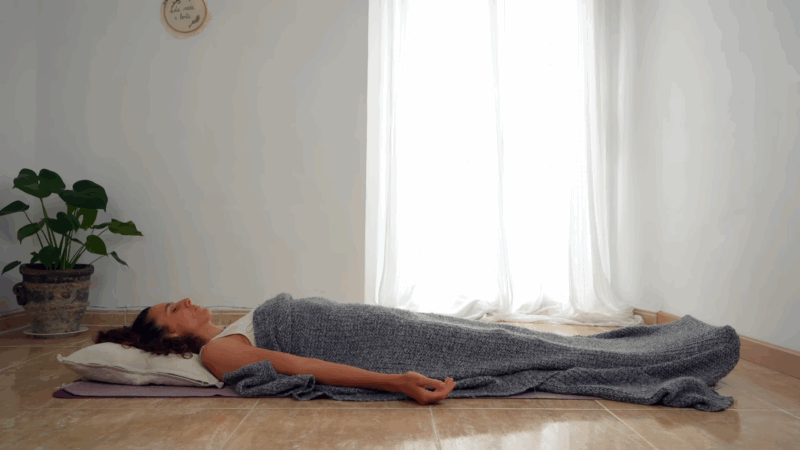
One of my students, Ana, shared her journey with Yoga Nidra during one of our closing circles. She had arrived at class quietly and withdrawn, carrying months of work-related exhaustion and waking every morning with tension headaches.
No amount of sleep, massages, or short vacations seemed to touch her fatigue. She told me she felt as though her body was permanently switched on, unable to find an off button.
After her first Yoga Nidra session, she described feeling hesitant to surrender. Her mind raced with to-do lists, but as the practice guided her through breath and body awareness, she felt something shift.
“It was like floating in a place between sleep and waking. For the first time in months, my shoulders softened, and I felt warmth spread across my chest,” she said.
Within a few weeks of practising Yoga Nidra three evenings a week, Ana noticed her sleep became deeper and her dreams more vivid yet peaceful. Her tension headaches eased, and she woke up feeling clearer, as if her mind had space to breathe again.
She shared, “I realised I was holding my breath through life. Yoga Nidra reminded me what it feels like to exhale fully, to trust that rest is safe.”
Listening to Ana, I felt grateful to have witnessed such a transformation. Her story is a reminder that healing often comes from practices that seem deceptively simple but reach deep into the nervous system, helping us return home to ourselves with every conscious breath.
Growing Your Practice Over Time
As your practice deepens, you will notice that you can enter relaxation states more quickly. Beginners benefit from guided recordings, but with time, you may be able to guide yourself through each step in silence.
Advanced practitioners utilize Yoga Nidra to explore emotional healing, release old patterns, and cultivate a deep connection with their inner wisdom.
Your practice will evolve with you. Some days, you may focus on rest; other days, on releasing anxiety or nurturing creativity. Listen to what your body and mind ask for each time you lie down to rest.
Conclusion
@mindfulsynchronicity Yoga Nidra shout out, none of the bend and all of the flow ✨ #mindbodyconnection #yogaflow #channeling #meditation #beginnerfriendly ♬ Metamorphosis – Danilo Stankovic
Burnout recovery is not about pushing through or forcing rest; it’s about allowing yourself to rest truly. It is about creating gentle spaces where your body can heal and your mind can find peace. Yoga Nidra offers this space with kindness and simplicity.
Start today with a short practice. Let it become part of your routine, like brushing your teeth or making your morning tea. Over time, these small acts of care build a foundation of calm, resilience, and renewed energy.
I invite you to roll out your mat, lie down, close your eyes, and let your breath guide you back to yourself. Your healing journey begins with just one conscious breath.
Related Posts:
- A Complete Guide to Yoga Sculpt - Benefits and 5…
- Chair Yoga for Seniors: A Safe and Effective Practice Guide
- A Step-by-Step Guide to Pranayama for Thyroid Health
- A Complete Guide to Goddess Pose (Utkata Konasana)
- What Is Blindfold Yoga - Power of Trusting Your…
- Introduction to Vinyasa Yoga - Elevate Your Practice





